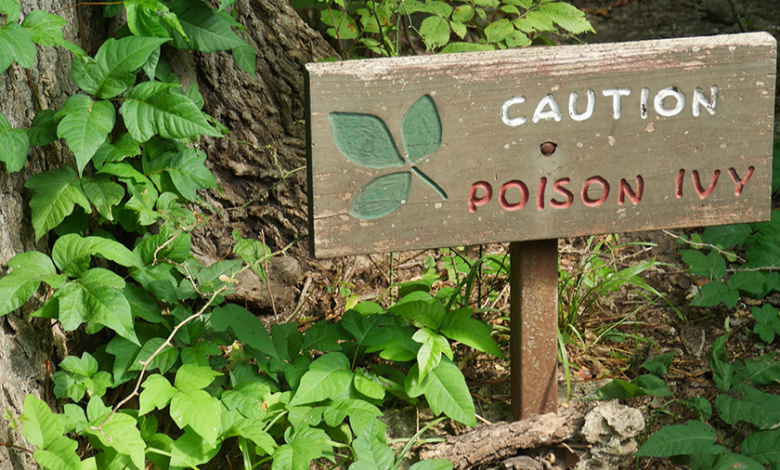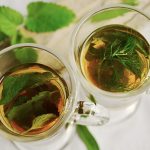Top 10 Poisonous Plants List and The Toxins They Contain

Poisonous plants are those that contain chemicals or substances that are toxic to humans, animals, or other organisms. These plants can cause a range of adverse effects when ingested, touched, or even inhaled. The toxicity levels can vary among different plant species, parts of the plant (leaves, stems, roots, berries, etc.), and even at different stages of growth.
Poisonous plants have evolved these toxic compounds as a defense mechanism against herbivores or to compete with other plants for resources. While some toxic plants are well-known and their dangers are widely recognized, others may be less familiar and pose a risk if encountered.
Human poisoning from toxic plants can occur, but the frequency of such incidents can vary depending on various factors such as geographical location, population density, awareness about poisonous plants, and individual behaviors. While it is challenging to provide precise statistics on the exact prevalence of plant poisonings, I can offer some general insights.
In developed countries with well-established healthcare systems and public awareness campaigns, the incidence of severe poisonings from toxic plants is relatively low. However, mild cases of plant-induced dermatitis or minor gastrointestinal symptoms may still occur fairly frequently.
On the other hand, in regions with limited access to healthcare, poor public awareness, or areas where traditional herbal medicines are commonly used, plant poisonings may be more prevalent. These incidents can be associated with accidental ingestion, intentional use for medicinal purposes without proper knowledge or guidance, or mistaken identification of edible and non-edible plants.
It’s important to note that children and pets are particularly vulnerable to plant poisonings due to their curious nature and inability to discern between safe and toxic plants. Therefore, it is crucial for caregivers to create a safe environment and educate themselves about the plants in their surroundings.
Most Common Poisonous Plants and The Toxins They Contain
Here are 10 common poisonous plants and the toxins they contain:
1. Poison Ivy (Toxicodendron radicans): Poison ivy produces an oily resin called urushiol. When exposed to urushiol, most people develop an allergic reaction characterized by redness, itching, and blistering of the skin. The resin can remain active on surfaces for long periods and can even be transferred by indirect contact.
2. Oleander (Nerium oleander): Oleander contains cardiac glycosides, including oleandrin and neriine. Ingesting any part of the oleander plant can lead to severe cardiac symptoms such as irregular heartbeat, low blood pressure, and even cardiac arrest. Even the smoke from burning oleander can be toxic if inhaled.
3. Castor Bean Plant (Ricinus communis): The castor bean plant produces seeds that contain ricin, a potent protein toxin. Ricin inhibits protein synthesis within cells, leading to organ failure and potentially death. Ingesting even a few castor beans can be lethal, and handling the seeds without proper precautions can also cause toxicity.
4. Datura (Datura spp.): Datura plants, also known as jimsonweed or devil’s trumpet, contain tropane alkaloids like scopolamine, hyoscyamine, and atropine. Ingesting parts of these plants can cause hallucinations, delirium, increased heart rate, blurred vision, dry mouth, and other neurological effects. Accidental ingestion can occur, especially in children.
5. Jimsonweed (Datura stramonium): Jimsonweed is a type of Datura plant that contains similar tropane alkaloids. Ingesting the seeds, leaves, or flowers of jimsonweed can lead to similar symptoms as other Datura species, including hallucinations, confusion, and other central nervous system effects.
6. Deadly Nightshade (Atropa belladonna): Deadly nightshade, also known as belladonna, contains tropane alkaloids, including atropine, scopolamine, and hyoscyamine. These compounds can cause dilated pupils, dry mouth, rapid heartbeat, delirium, hallucinations, and other toxic effects on the central nervous system.
7. Water Hemlock (Cicuta spp.): Water hemlock plants contain the highly toxic compound cicutoxin. Ingesting any part of the plant, particularly the roots, can result in seizures, muscle tremors, respiratory failure, and even death. Water hemlock is considered one of the most toxic plants in North America.
8. Autumn Crocus (Colchicum autumnale): The bulbs of the autumn crocus contain colchicine, a toxic alkaloid that interferes with cell division. Ingesting the bulbs can cause severe gastrointestinal symptoms such as vomiting and diarrhea, organ failure, and bone marrow suppression.
9. Yew (Taxus spp.):Yew trees contain taxine alkaloids in their seeds, leaves, and bark. Ingesting any part of the yew plant can cause cardiac arrest, seizures, respiratory distress, and other severe symptoms. It is important to note that while the red flesh of the yew berry is not toxic, the seed within it is highly poisonous.
10. Monkshood (Aconitum spp.): Monkshood plants, also known as wolfsbane or aconite, contain alkaloids such as aconitine, mesaconitine, and hypaconitine. These alkaloids affect the cardiovascular and nervous systems, leading to symptoms like irregular heartbeat, numbness, muscle weakness, and in severe cases, cardiac arrest. Ingestion of any part of the plant can be fatal.
How to Prevent Poisoning From Toxic Plants
To prevent poisoning from toxic plants, here are some important measures you can take:
1. Educate yourself: Learn to identify common toxic plants in your region. Familiarize yourself with their characteristics, such as distinctive features, growth patterns, and typical habitats. This knowledge will help you avoid accidental contact or ingestion.
2. Be cautious outdoors: When spending time in natural areas, parks, or gardens, be mindful of your surroundings. Avoid touching or consuming unfamiliar plants, especially those with glossy leaves, thorns, or a strong odor.
3. Wear protective clothing: If you’re working in areas where poisonous plants may be present, wear long sleeves, long pants, closed-toe shoes, and gloves. This can minimize direct contact with the plants and reduce the risk of skin exposure.
4. Teach children and pets: Educate children about the potential dangers of toxic plants and teach them not to touch or ingest unknown plants. Keep an eye on your pets, as they may be more prone to investigate and chew on plants.
5. Maintain a safe garden: If you have a garden or landscaping, choose non-toxic plants or those that are safe for your specific environment. Remove any toxic plants that are already present, especially if you have children or pets.
6. Use caution with herbal remedies: If you use herbal remedies or medicinal plants, do thorough research and consult with a qualified herbalist or healthcare professional. Ensure that you are using the correct plant species and that you understand the proper preparation and dosage.
7. Read product labels: When using fertilizers, insecticides, or other garden chemicals, carefully read the labels and follow the instructions. Improper use of these products can contaminate plants and pose a risk if consumed.
8. Practice good hygiene: After working outdoors or being in areas where toxic plants may be present, wash your hands thoroughly with soap and water. This can help remove any plant residue that may cause skin irritation or prevent accidental ingestion.
9. Maintain a well-maintained yard: Regularly inspect your yard or outdoor spaces for any toxic plants and remove them if necessary. Keeping your yard well-maintained can reduce the chances of encountering poisonous plants.
10. Seek professional help if unsure: If you come across a plant that you cannot identify or are unsure about its toxicity, consult with a local horticulturist, botanist, or plant expert who can provide accurate information and guidance.
Remember, prevention is key when it comes to avoiding poisoning from toxic plants. By being informed, cautious, and attentive to your surroundings, you can significantly reduce the risk of encountering and being affected by poisonous plants.





